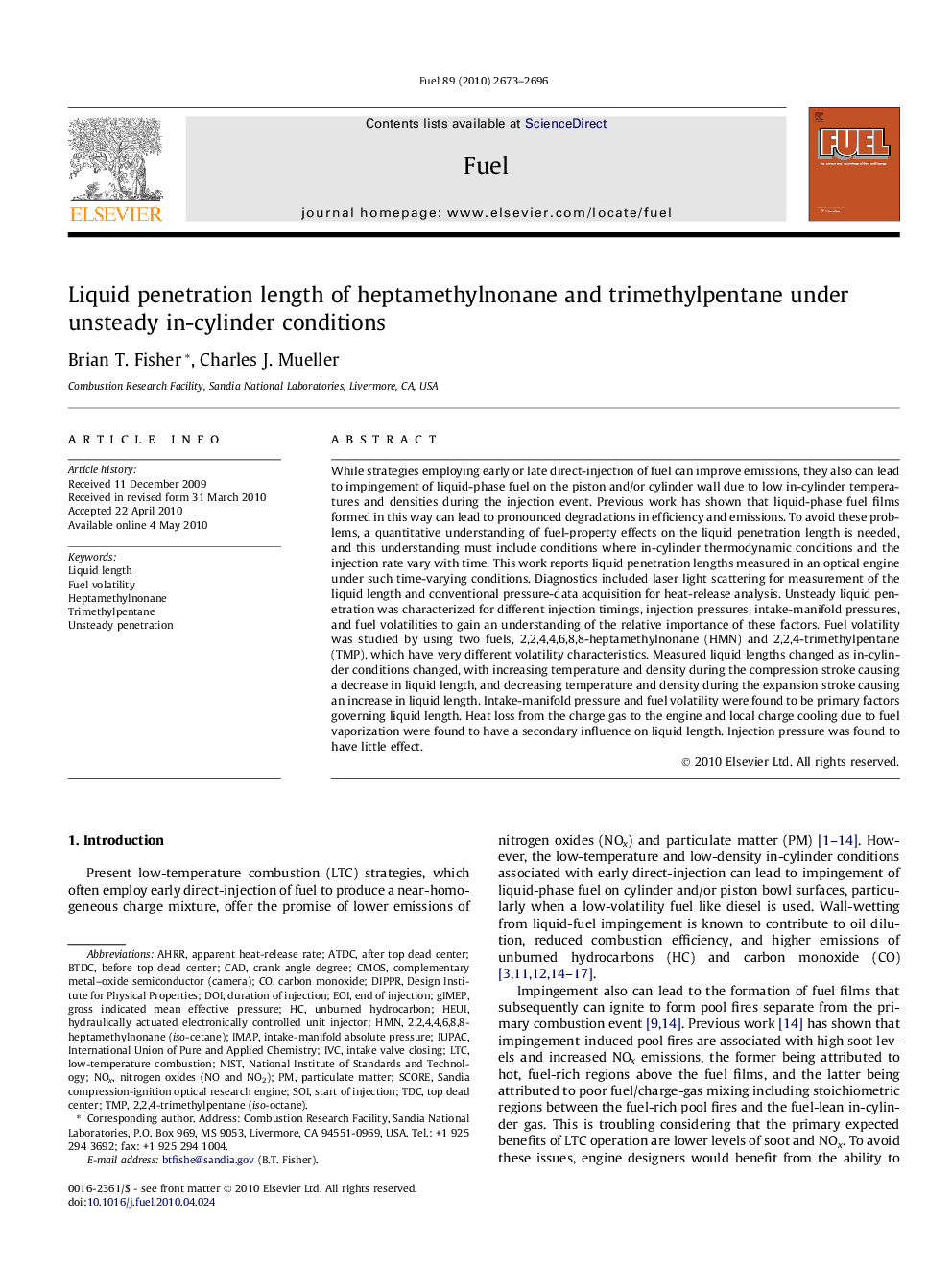| کد مقاله | کد نشریه | سال انتشار | مقاله انگلیسی | نسخه تمام متن |
|---|---|---|---|---|
| 206530 | 461192 | 2010 | 24 صفحه PDF | دانلود رایگان |

While strategies employing early or late direct-injection of fuel can improve emissions, they also can lead to impingement of liquid-phase fuel on the piston and/or cylinder wall due to low in-cylinder temperatures and densities during the injection event. Previous work has shown that liquid-phase fuel films formed in this way can lead to pronounced degradations in efficiency and emissions. To avoid these problems, a quantitative understanding of fuel-property effects on the liquid penetration length is needed, and this understanding must include conditions where in-cylinder thermodynamic conditions and the injection rate vary with time. This work reports liquid penetration lengths measured in an optical engine under such time-varying conditions. Diagnostics included laser light scattering for measurement of the liquid length and conventional pressure-data acquisition for heat-release analysis. Unsteady liquid penetration was characterized for different injection timings, injection pressures, intake-manifold pressures, and fuel volatilities to gain an understanding of the relative importance of these factors. Fuel volatility was studied by using two fuels, 2,2,4,4,6,8,8-heptamethylnonane (HMN) and 2,2,4-trimethylpentane (TMP), which have very different volatility characteristics. Measured liquid lengths changed as in-cylinder conditions changed, with increasing temperature and density during the compression stroke causing a decrease in liquid length, and decreasing temperature and density during the expansion stroke causing an increase in liquid length. Intake-manifold pressure and fuel volatility were found to be primary factors governing liquid length. Heat loss from the charge gas to the engine and local charge cooling due to fuel vaporization were found to have a secondary influence on liquid length. Injection pressure was found to have little effect.
Journal: Fuel - Volume 89, Issue 10, October 2010, Pages 2673–2696